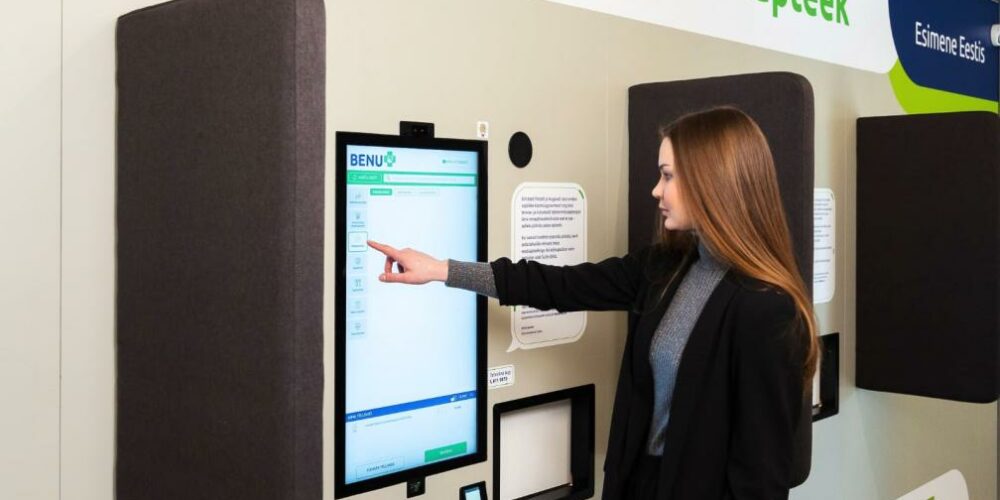April 26, 2023
by Blessing Oyetunde

Healthcare is transforming before our eyes. Let us introduce you to the most exciting startups and companies operating in Estonia’s healthtech sector, focusing on predictive and preventive medicine. These companies are reimagining health and well-being, from predicting chronic diseases and neurological disorders risk to enabling early diagnosis to personalise treatment plans and supporting long-term health management. With them, healthcare is no longer reactionary but becoming proactive, personalised and precision-focused.
The once-unshakeable medical and healthcare industry is slowly but surely embracing digital transformation. Advancements in AI, machine learning, and other technologies enable predictive, preventive and personalised medicine on an unprecedented mainstream scale. And Estonia, with its digital-first mindset and startup-friendly ecosystem, is at the forefront of this healthcare revolution.
Antegenes
A member of the Estonian HealthTech Cluster, Antegenes is a medical technology startup tackling cancer with genomics. They use high-tech polygenic risk score technology to assess an individual’s genetic risk of developing cancer by analysing thousands of genetic variants and personal background information. Antegenes offers tests for breast cancer, prostate cancer, colorectal cancer, and melanoma.
With their personalised and unique results, people can take proactive steps towards cancer prevention and early detection. Notably, one of the company’s outstanding points is that they offer an easy and convenient way to perform the required tests without leaving home. In 2022, Antegenes raised €2.3 million in funding through investors and grants to bring its novel solution into broader use in healthcare and expand to new foreign markets.
Transformative AI
Founded in 2016, Transformative AI is an AI-driven healthcare company focused on the early detection and prevention of life-threatening conditions. They are transforming patient monitoring through predictive analytics and deep learning. Their flagship product, an AI-powered model, predicts the risk of sudden cardiac arrest and detects subtle changes indicating patient deterioration, enabling earlier intervention and improved outcomes.
A member of the Health Founders accelerator, Transformative AI has raised well over $2 million in funding to advance its technology and scale its operations worldwide. As they note, “Our technology offers new hope for the 299,000 patients who experience cardiac arrest in US hospitals each year—of whom only 25% survive—and for the 6 million people around the world who die from sudden cardiac arrest annually.”
Geneto
Through a partnership with the Estonian Genome Center (University of Tartu) and an app supported by Elisa Eesti AS, Geneto provides the world’s first-ever nutrition and fitness service based on genetic insights. By utilising an intuitive app and easy-to-use at-home genetic testing kits, Geneto empowers individuals with knowledge of their genetics to make informed lifestyle choices, proactively address potential health risks, and optimise their overall health and well-being.
The platform evaluates potential disease risks, such as diabetes, heart disease, and obesity, to determine users’ most suitable diet, exercise, and wellness plans. Additionally, it tracks progress over time to ensure success. Following its success in Estonia, Geneto entered the UK market in June 2022 and has plans for further international expansion. The company is also a member of the Estonian HealthTech Cluster.
Neurosalience
Founded in 2020, Neurosalience is a groundbreaking startup dedicated to developing tools that aid in the early detection of dementia through structural MRI scans to improve patient outcomes. Their novel solution Neurosalience® is a pioneering tool capable of assessing the risk of dementia even on low-resolution MRI data from older scanners.
Furthermore, the solution has potential extensions to include CT scans, which are widely available and cost-effective. Neurosalience’s technology predicts brain age from MRI/CT data as a biomarker of neurodegenerative conditions. And with its accuracy already proven, Neurosalience’s innovative technology can detect dementia long before the first symptoms occur, making it a significant breakthrough in medical research.
Activate Health
Activate Health is a digital clinic that provides fully remote preventive care for managing and monitoring heart health, especially for patients with elevated health risks. Their evidence-based prescriptive software, combined with unique digital health audits and ready-made lifestyle programs, gives patients the tools they need to manage their cardiovascular health, reduce their risks, prevent disease, and optimise their overall well-being.
In addition, Activate Health is developing a digital therapeutics (DTx) platform that will be the first of its kind in the world. This platform aims to prevent and intervene early in metabolic syndrome, a pervasive yet overlooked cluster of conditions that often occur together and increase the risk of diabetes, stroke and heart disease. In 2022, the digital clinic received a €1 million grant to develop further its platform with the Estonian Genome Centre, the University of Tartu and SYNLAB.
Estonia puts the tech in healthtech
Estonia’s healthtech scene is a testament to the country’s thriving startup culture and collaborative hubs. Moreover, these five startups, among others, showcase the ingenuity and innovation driving the industry forward. As healthcare challenges persist globally, Estonia’s healthtech pioneers offer a beacon of hope for improving patient outcomes, reducing healthcare costs, and ultimately saving lives.
Through a commitment to digital transformation and staying at the forefront of medical advancement, Estonia’s healthtech sector is making a significant impact on people’s lives at home and abroad. Furthermore, it sets an example for the rest of the world to follow by showing how technology can be leveraged to address critical healthcare issues.
Resouce: e-estonia










